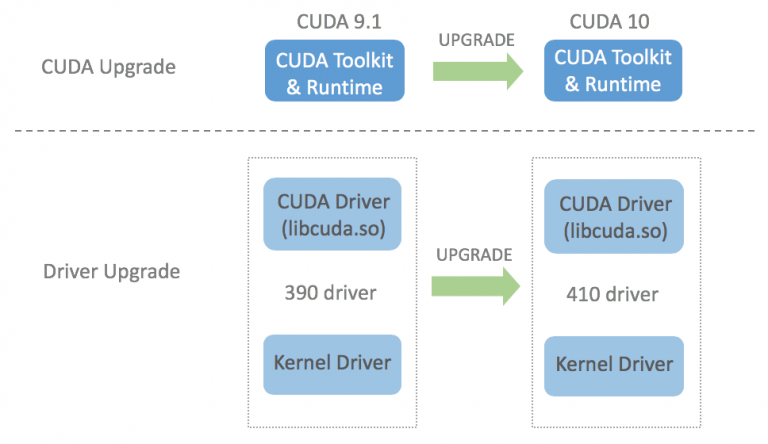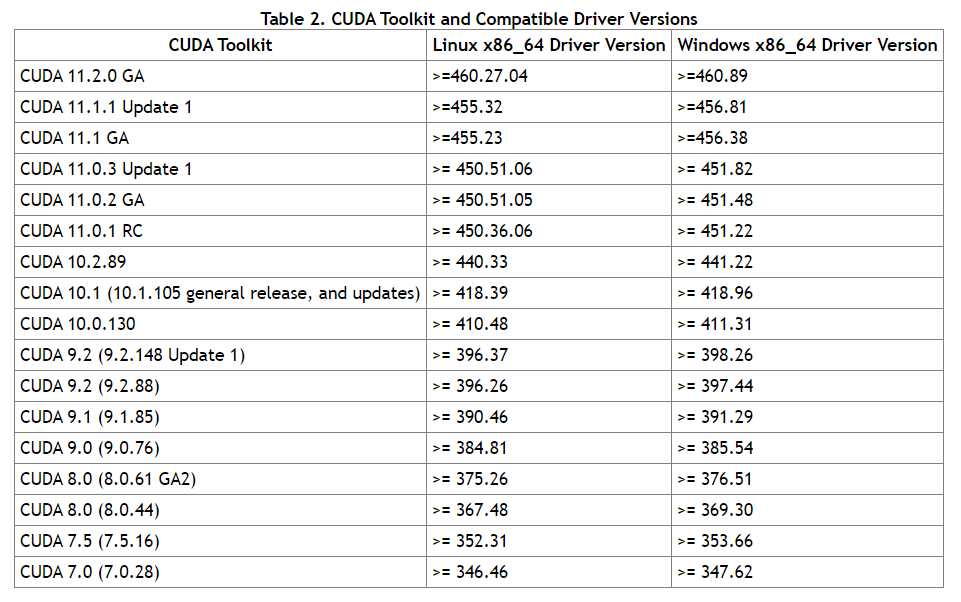

- #Nvidia cuda toolkit compatibility install
- #Nvidia cuda toolkit compatibility upgrade
- #Nvidia cuda toolkit compatibility code
#Nvidia cuda toolkit compatibility code
With this ability, user code in kernels can dynamically schedule graph launches, greatly increasing the flexibility of CUDA Graphs.

Not all changes are listed here, but this post offers an overview of the key capabilities. You can now target architecture-specific features and instructions in the NVIDIA Hopper and NVIDIA Ada Lovelace architectures with CUDA custom code, enhanced libraries, and developer tools.ĬUDA 12.0 includes many changes, both major and minor. This release is the first major release in many years and it focuses on new programming models and CUDA application acceleration through new hardware capabilities.įor more information, watch the YouTube Premiere webinar, CUDA 12.0: New Features and Beyond.
#Nvidia cuda toolkit compatibility install
You may install Visual Studio community edition (recent versions) using the following links: Visual Studio versionĭuring the installation, make sure you check “C/C++ compiler”.NVIDIA announces the newest CUDA Toolkit software release, 12.0. The table below is obtained from the CUDA Release notes from different CUDA releases.Īlso note that older GPUs (e.g., Geforce 400 series) can only be targetted using CUDA v9. Note that since CUDA v6.5, only 64-bit code is supported (圆4 architecture). The best GPU performance is generally obtained using the most recent CUDA version.
#Nvidia cuda toolkit compatibility upgrade
In case you are in an unsupported scenario, it is best to either upgrade Visual Studio or downgrade CUDA. The following chart shows which combinations of Visual Studio versions vs. CUDA versions are supported by the NVIDIA CUDA compiler (NVCC). However, not every version of CUDA is compatible with any version of Visual C/C++. It is therefore not necessary to run Quasar/Redshift from a developer command prompt.

Quasar detects the C/C++ compiler to use for NVCC automatically. As a developer, this is typically achieved by running nvcc from a Visual Studio Developer command prompt. To call nvcc, it is required that the correct environment variables are set. In Windows, the NVIDIA CUDA compiler nvcc uses a Visual C/C++ compiler behind the scenes. CUDA / Microsoft Visual C++ compatibility


 0 kommentar(er)
0 kommentar(er)
